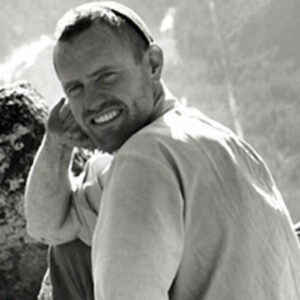American physicist Henry Way Kendall (1926–1999). As a result of his pioneering work on deep inelastic scattering of electrons on protons and bound neutrons, he shared the 1990 Physics Nobel Prize with Jerome Friedman and Richard Taylor. MIT’s J. A. Stratton Professor of Physics Kendall was also involved in writing, analysis, and public activities linked to US energy and security concerns, as well as worldwide environmental challenges such as population growth, resource management, and climate change. He founded and led the Union of Concerned Scientists, and he was active in energy, defense, and environmental issues. To speak on important matters, participate on panels and committees, and testify in government hearings, he was frequently asked. Henry W. Kendall was a man of many interests. He went on huge mountaineering treks with cameras to capture spectacular sights. He pioneered underwater photography and dive exploration. He was extremely keen on maritime history.
Early Childhood of Henry Way Kendall
Henry was born in Boston on December 9, 1926, and raised in Sharon. He was the first child of industrialist Henry P. Kendall and Evelyn Way Kendall.
He went to Deerfield Academy, a prep school. After graduation in 1945, he served on a troop transport throughout the winter of 1945-1946.
After graduating from Amherst College in 1950 with a major in mathematics, he enrolled in MIT as a graduate student in physics.
His Ph.D. thesis was supervised by Martin Deutsch. The attempt to measure the Lamb shift in positronium failed.
Work After graduating from MIT and Brookhaven National Laboratory in 1955, Henry began his postdoctoral career in novel instrumentation.
In 1956, he joined Robert Hofstadter’s team at Stanford University to study atomic nuclei size using elastic electron scattering.
He taught at Stanford until 1961, when he returned to MIT as a full professor, and was named the Julius A. Stratton Professor of Physics in 1991.
With the late 1950s and early 1960s, he spent five years in Robert Hofstadter’s research group at Stanford University, exploring the structure of protons and neutrons with the university’s 300 foot long linear electron accelerator. At Stanford, he worked closely with Wolfgang K. H. Panofsky.
He returned to MIT’s Physics Department for the remainder of his life.
Kendall collaborated with Friedman and Taylor at SLAC in the late 1960s and early 1970s. These experiments used high-energy electron beams to scatter protons, deuterons, and heavier nuclei. The fact that electrons only scatter at low angles at low energy supports the concept that nucleons have no intrinsic structure.
It turns out that higher energy electrons can be scattered at considerably higher angles, although with energy loss. These observations showed for the first time that protons and neutrons were made up of point-like particles, later named as up and down quarks. The experiments also revealed the presence of gluons.
A Fermilab neutrino experiment in 1982 brought him and Friedman much closer to their deep-inelastic roots. Their participation in the SLAC electron-positron annihilation program began in 1988.
Henry was deeply committed to several societal problems, most of which were scientific and technology oriented. He was particularly concerned about the risks of using nuclear physics for military and civilian purposes. In the 1960s, he joined the Institute for Defense Analyses’ JASON Group.
The JASON Group advised the Department of Defense on a variety of military matters, focusing on the nuclear arms race and the electronic barrier idea to suppress guerrilla operations during the Vietnam War.
In 1969, he co-founded the Union of Concerned Scientists with MIT physics colleagues (UCS).
Henry was the chair of UCS from 1974 until his death. His leadership expanded UCS’s reach and effectiveness. He worked on nuclear arms control, missile defense, and renewable energy programs.
Kendall was a gifted physicist, mountaineer, and photographer. He went on expeditions to the Andes, Himalayas, and Antarctica, shooting his adventures using large format cameras.
Honors & Awards
A joint 1990 Nobel Prize winner with Jerome Isaac Friedman and Richard E. Taylor.
Henry Kendall was a member of the American Academy of Arts and Sciences, the American Physical Society, and the American Association of Arts and Sciences.
Besides the Nobel Prize in 1990, he received numerous honors. These included the Bertram Russell Society Award in 1982 and the Lincoln Filene Center Award from Tufts University in 1991.
Personal Legacy of Henry Way Kendall
Henry perished in a diving accident in Florida in February 1999 at the age of 72.
Estimated Net Worth
Henry Way Kendall’s net worth is believed to be between $1 million and $9 million. His principal work as a Physicist has made him quite wealthy.


